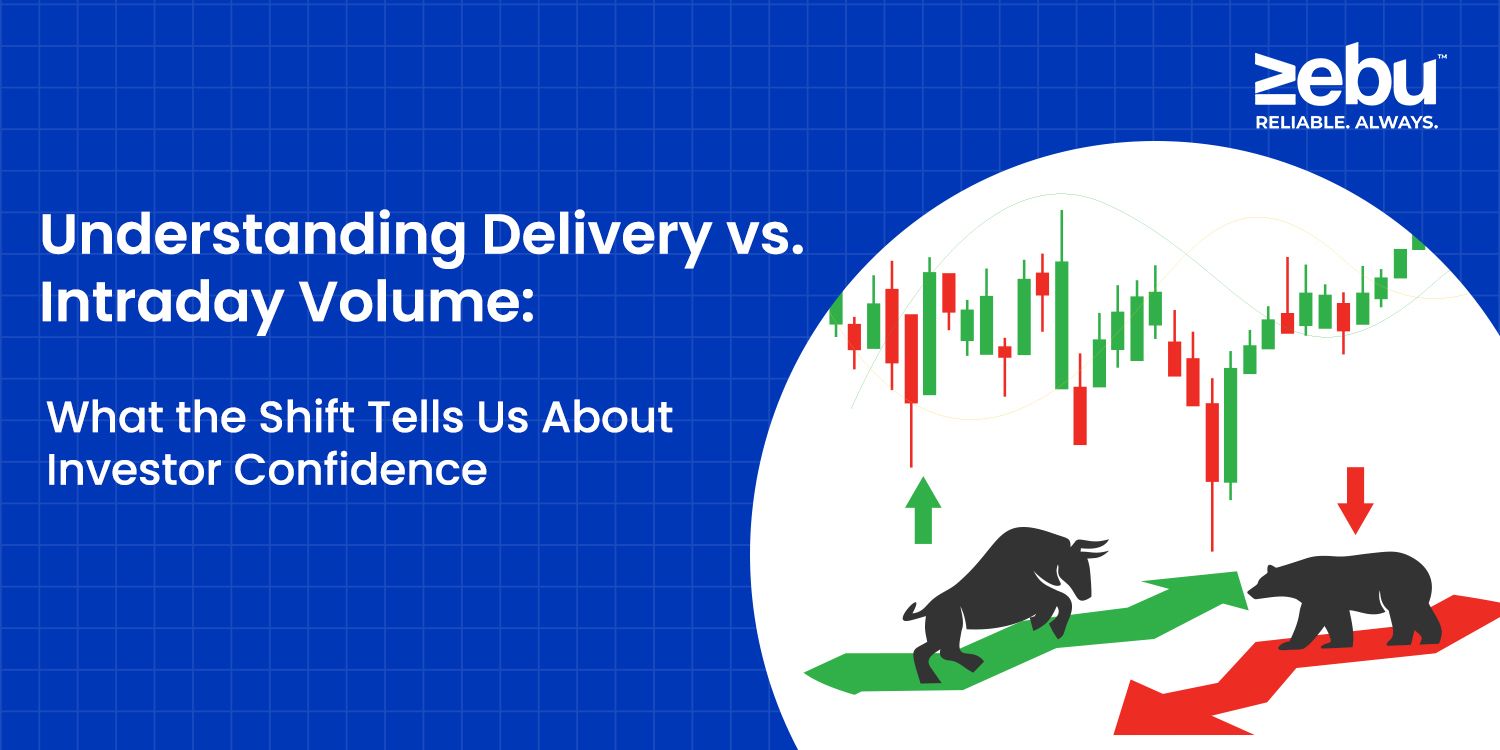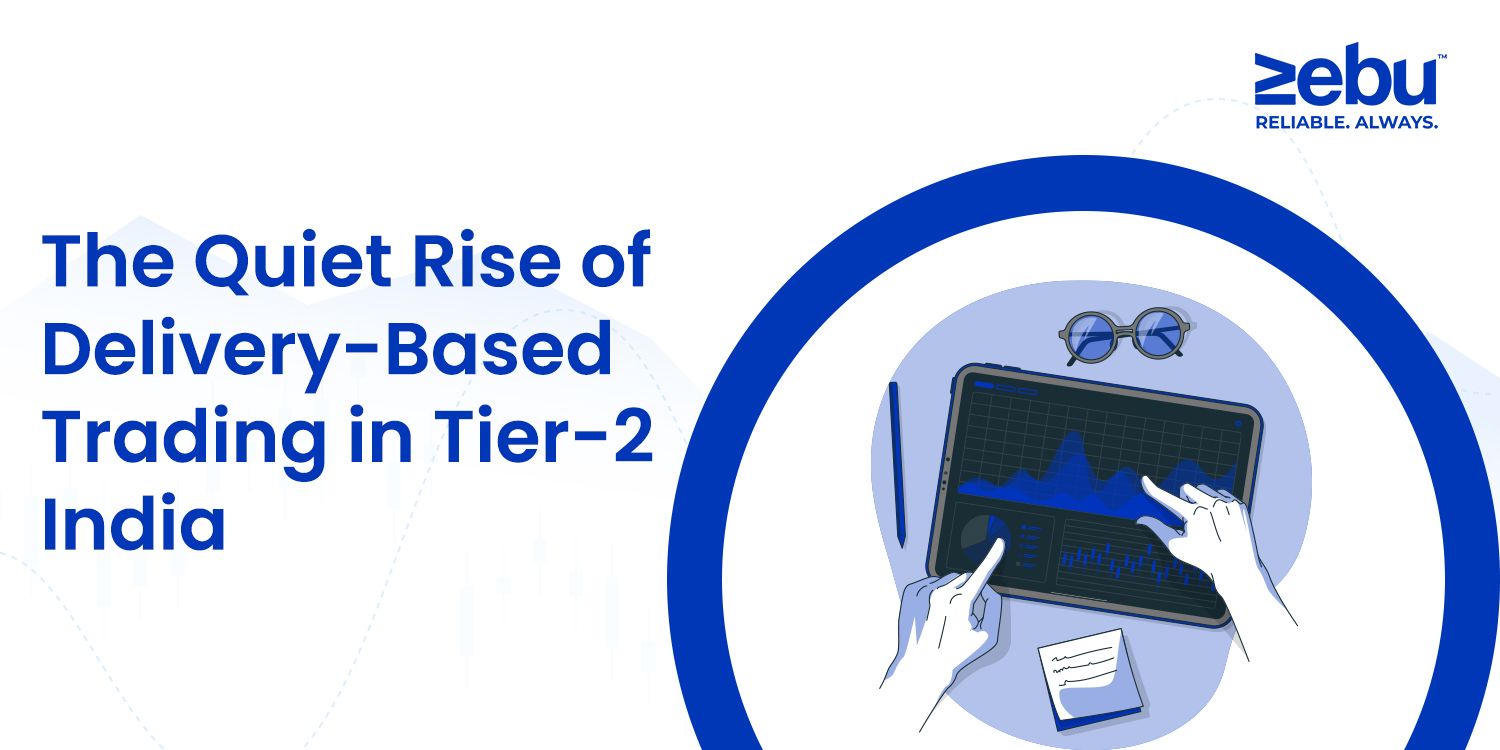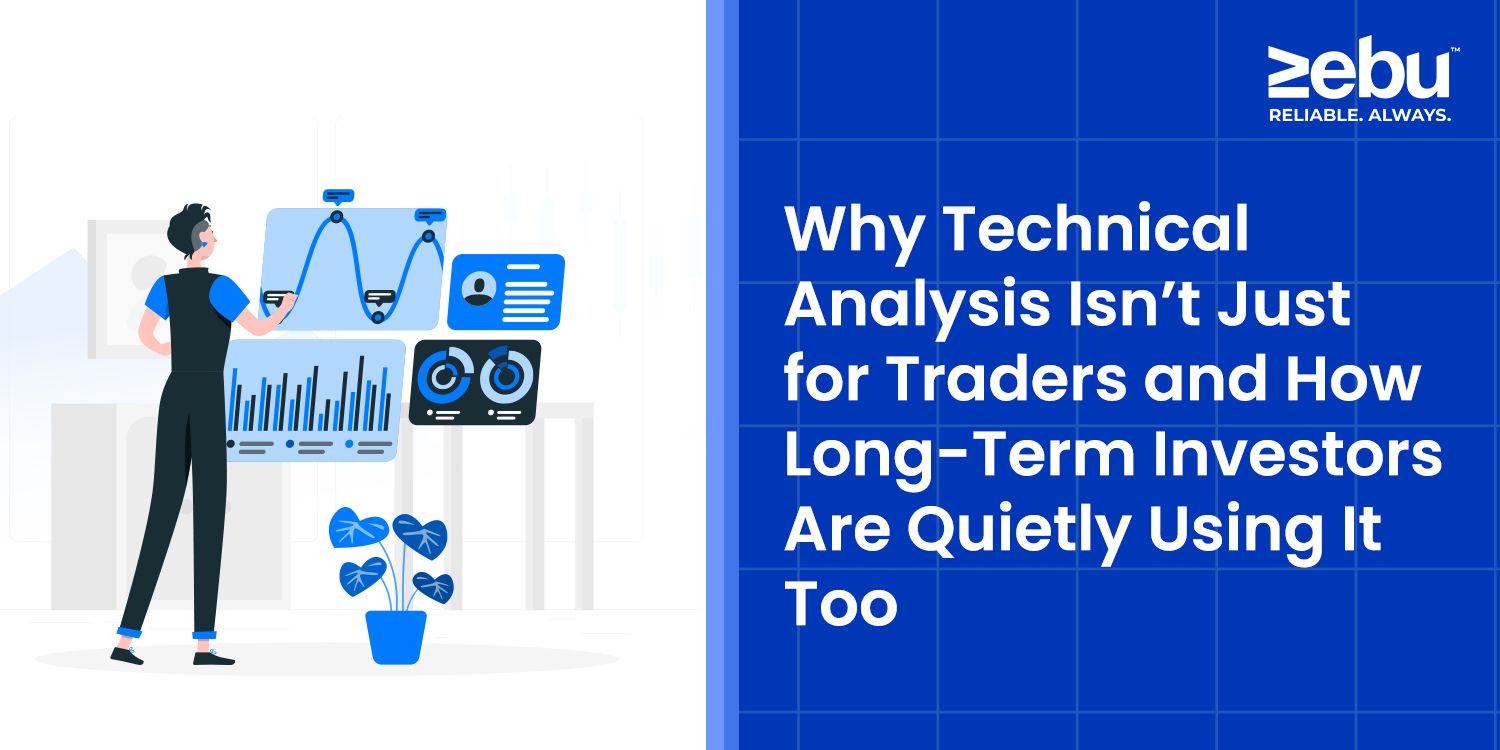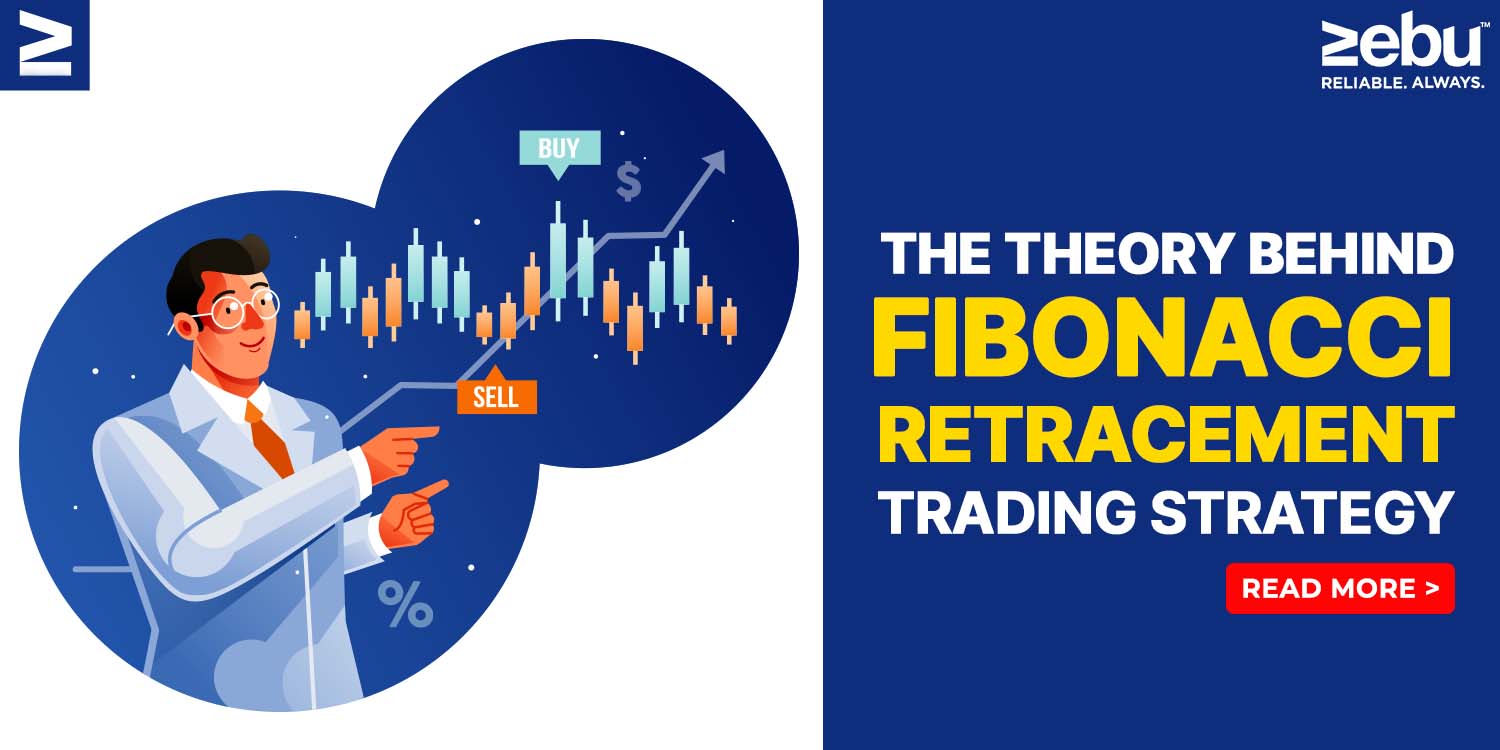
Stock markets are often spoken about in terms of numbers—prices rising, indices climbing, percentages gained or lost. But beyond these obvious figures is another set of data that speaks more quietly, and often more meaningfully, about investor behaviour. Volume is one such indicator. Every trade that takes place in a listed company adds to the total volume. But the nature of that volume is just as important as the number itself. Specifically, whether that trade was meant to be closed within minutes or held beyond the day reveals something deeper about the market’s tone.
At first glance, the terms “delivery volume” and “intraday volume” might sound overly technical, or even interchangeable. They aren’t. The difference between them isn’t just academic—it tells us how people are interacting with the market: whether they’re chasing a move or committing to a position.
At Zebu, we’ve seen the difference in how these two types of activity unfold across the same price chart. One reflects immediacy. The other, intention.
Intraday Volume: Movement Without Attachment
Intraday activity, by definition, begins and ends within the same trading session. A person buys a stock and sells it—hopefully at a profit—before the closing bell. This sort of participation is common during earnings releases, regulatory updates, or any moment that introduces uncertainty or anticipation.
The purpose here is singular: capitalize on movement. There is no expectation of staying with the stock longer than necessary. As such, these trades tend to spike on news and disappear just as quickly.
There’s nothing wrong with this. Markets thrive on liquidity and participation. But when the majority of trades in a given stock are closed within the day, it’s usually an indicator that most people aren’t interested in holding. They’re responding, not investing.
Delivery Volume: Participation with Patience
By contrast, delivery volume measures how many trades lead to actual ownership. That is, shares that move into a demat account and are held beyond market close.
This doesn’t necessarily mean the investor plans to keep the stock forever. It could be a short-term view, a mid-term allocation, or simply part of a larger strategy. But the point is—someone chose not to exit that day.
That decision involves additional friction. The trade must be settled, brokerage fees apply, and unlike intraday, there’s no free exit. Even for a modest holding, taking delivery requires a conscious commitment—however temporary—to sit with the position.
In our view at Zebu, that commitment, even when small, says something. It suggests a shift from reacting to reasoning.
At These Behaviors Reflect
The real takeaway isn’t that one approach is better. Rather, each type of activity tells a different story. Heavy intraday volume can indicate excitement, speculation, or volatility. Delivery volume, on the other hand, is usually a quieter signal. When it increases steadily, especially without dramatic price change, it points to something more deliberate: confidence, positioning, or the early stages of accumulation.
These aren’t predictions. They’re patterns. And for investors who want to understand market behaviour—not just the price at which they bought or sold—recognizing those patterns adds depth to what’s otherwise just a number.
Reading Market Tone Through Participation
There are trading days when everything feels loud. Earnings season. Budget announcements. Global rate decisions. On such days, it’s normal for intraday activity to rise. Traders are trying to stay ahead of the news or respond to it quickly. But some of the most revealing days are the quieter ones. When there’s no major trigger, and price movement is marginal, yet delivery interest quietly builds. That shift tells you something that price doesn’t: someone sees value. Or opportunity. Or at the very least, a reason not to rush out.
We’ve observed this across our user base—particularly among those using Zebu to track delivery percentages as part of their broader research. They aren’t looking for trades. They’re looking for rhythm.
Sectoral Contexts: Not All Volume Behaves the Same
Every sector carries its own relationship with volume. In banking and infrastructure, for example, it’s common to see relatively high delivery engagement. These are areas where institutions often build positions gradually. In other segments—like newer listings, or highly volatile small caps—volume can be brisk, but often lacks holding. The same stock might see interest one day, and fade the next.
This doesn’t reflect quality. But it does affect how one might interpret the activity. A stock consistently drawing delivery even during consolidation may not attract headlines. But it’s being noticed—just not loudly.
What Zebu Users Are Noticing
Many users on our platform are choosing to pay attention not just to whether a stock went up or down, but how it moved. A percentage gain looks one way when most of it came from fast trades. It looks very different when most of it came from buyers who stayed. Some users track delivery interest through simple watchlists. Others monitor ratios on their own dashboards. The point isn’t analysis for the sake of analysis—it’s observation for the sake of perspective.
Seeing delivery activity rise over a week—even without price moving much—often gives a sense that something is shifting. Not necessarily that a stock will move. But that the type of attention it’s receiving is changing.
That, for thoughtful investors, is enough.
A Note on Interpretation
It’s important not to view delivery data as a signal in itself. A spike might reflect quiet buying. Or it could be the result of a one-time portfolio adjustment. It might even be a failed intraday square-off.
So what’s the use? Not certainty. But a more rounded understanding of how the market is interacting with a stock. Not whether it will rise. But whether the attention it’s receiving is short-lived or structured.
Delivery volume offers no guarantees. But it leaves a trail of how investors are choosing to behave. That’s worth noting.
Tools That Offer Visibility, Not Pressure
Zebu’s platform includes tools that help investors observe this kind of activity without demanding reaction. Charts are clean. Indicators are optional. And delivery data sits where it can be seen, but not shouted. This kind of calm interface suits a kind of investor we increasingly recognize—those who don’t want to chase. Just follow. And sometimes, stay.
Final Thoughts
There’s no need to become an expert in volume data. Most investors don’t need to calculate ratios or build spreadsheets. But knowing the difference between participation that comes and goes—and participation that stays—even for a little while—can reframe how you see the stocks you already hold.
Because when the noise fades, and the price steadies, it’s these quieter signals that often offer the clearest view of confidence.
Disclaimer
This article is meant to provide educational insights into market activity. It does not offer investment advice, forecasts, or personalized recommendations. Investors are advised to consider multiple data points and consult qualified professionals before making financial decisions. Zebu provides tools for observation and learning, not predictive modeling.
FAQs
- Which is better, intraday or delivery?
It depends on your goals. Intraday trading is fast-paced and riskier, while delivery trading focuses on holding stocks longer and is generally safer. Delivery volume often signals stronger investor confidence.
- How much volume is good for intraday trading?
Higher volume stocks are better for intraday trading because they’re more liquid, allowing easier entry and exit without big price swings.
- What does high delivery volume indicate?
High delivery volume usually shows strong investor confidence, as more people are willing to hold the stock instead of just trading it intraday.
- Can delivery volume predict long-term stock trends?
Yes, consistently high delivery volume can hint at potential long-term growth, reflecting trust in the company’s fundamentals.
- Should beginners start with delivery or intraday trading?
Beginners are better off starting with delivery trading, as it’s less stressful and allows more time to learn market behavior.








